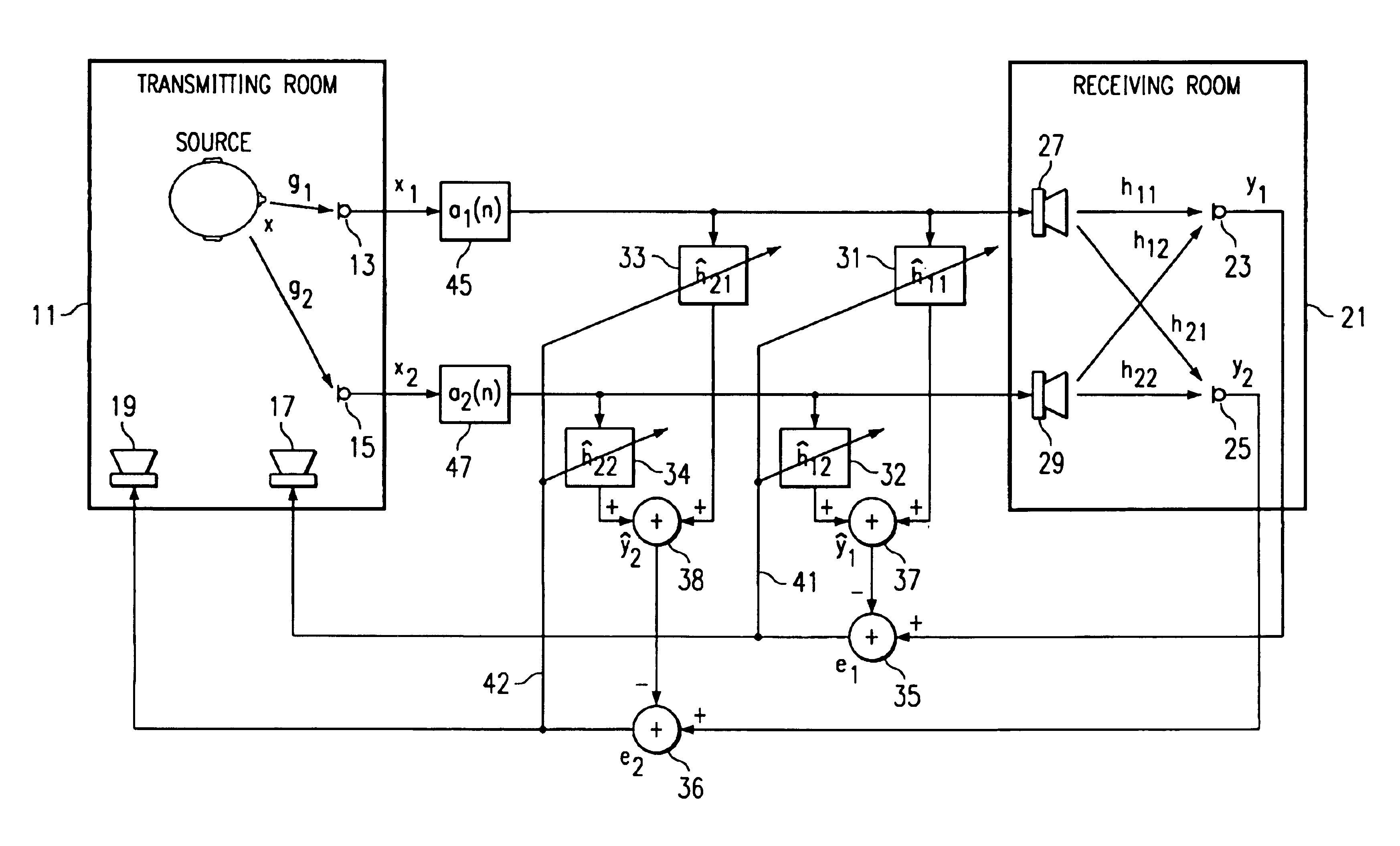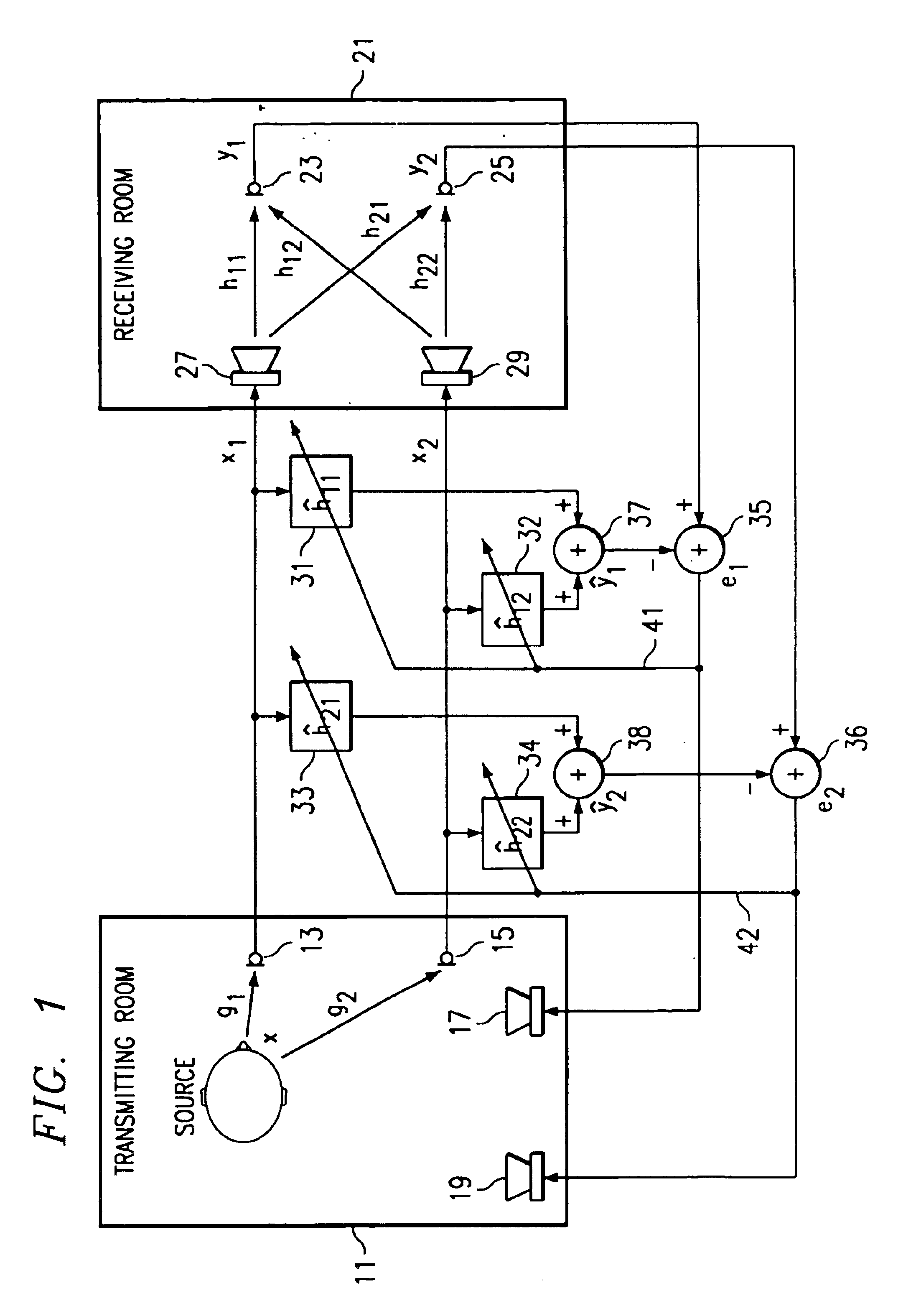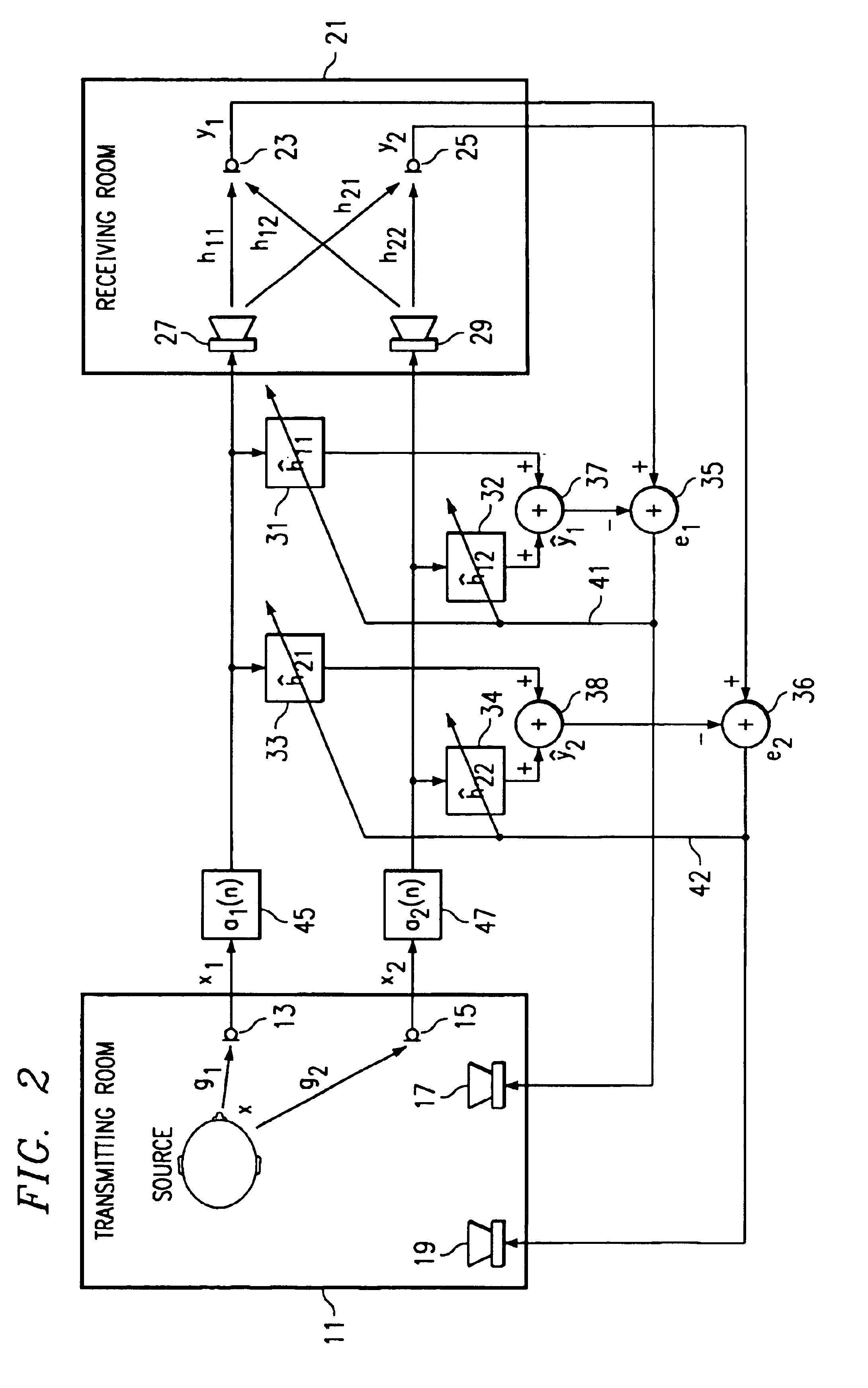Acoustic echo-cancellation system
a cancellation system and acoustic echo technology, applied in the direction of transducer casings/cabinets/supports, transducers, electric transducers, etc., can solve the problems of inability to uniquely determine the echo path response, and the adaptive technique used in stereophonic aec systems fails to identify the echo path response correctly
- Summary
- Abstract
- Description
- Claims
- Application Information
AI Technical Summary
Problems solved by technology
Method used
Image
Examples
Embodiment Construction
[0011]FIG. 1 shows the configuration of a typical stereophonic echo cancellation system 10. The transmission room (depicted on the left) 11 has two microphones 13 and 15 that pick up the speech signal, x, via the two acoustic paths characterized by the impulse responses, g1 and g2. All acoustic paths are assumed to include the microphone and / or loudspeaker responses. The ith microphone output is then given by (in the frequency domain)
Xi(ω)=G1(ω)X(ω). (1)
[0012]In this application, the upper-case letters represent the Fourier transforms of the time-domain signals denoted by the corresponding lower-case letters. The whole system is considered as a discrete-time system ignoring any A / D or D / A converter. These signals are presented through the set of loudspeakers 27 and 29 in the receiving room 21 (on the right in FIG. 1). Each microphone 23 and 25 in the receiving room picks up an echo (y1, y2 in FIG. 1) from each of the loudspeakers. Let hij be the acoustic path impulse response fro...
PUM
 Login to View More
Login to View More Abstract
Description
Claims
Application Information
 Login to View More
Login to View More - R&D
- Intellectual Property
- Life Sciences
- Materials
- Tech Scout
- Unparalleled Data Quality
- Higher Quality Content
- 60% Fewer Hallucinations
Browse by: Latest US Patents, China's latest patents, Technical Efficacy Thesaurus, Application Domain, Technology Topic, Popular Technical Reports.
© 2025 PatSnap. All rights reserved.Legal|Privacy policy|Modern Slavery Act Transparency Statement|Sitemap|About US| Contact US: help@patsnap.com



